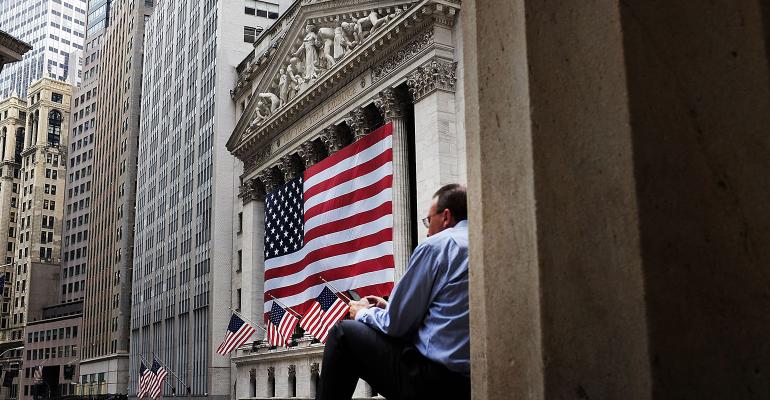By Dani Burger
(Bloomberg) --What should be the year of the active investment manager is morphing into something surprising: ETF heaven.
Institutional stock pickers hold a record amount of exchange-traded funds and control nearly half of the ETF options market, according to research by Goldman Sachs Group Inc. The mutual and hedge funds join a growing base of investors enamored with the cheaper and passive products, which have absorbed more than $150 billion this year alone.
It’s a curious development considering historical correlations between S&P 500 Index stocks hit an all-time low in February and have since remained 57 percent below the six year average, data from Bloomberg show. Stock pickers have eagerly awaited this scenario because it’s easier to differentiate between winning and losing shares.

Yet rather than chase individual stocks, many active investors have poured cash into broader market ETFs. That’s because lockstep moves among sectors have become even less common than share correlation.
“While much has been made about the sharp decline in correlations suggesting we are now in a stock pickers market, the fact that inter-sector correlation has fallen below intra-sector correlations suggests getting the sector right provided more alpha than picking the right stocks in the sector,” the Goldman team, headed by Katherine Fogertey, wrote in a note dated Sunday. “The recent importance of sector selection has made using sector and smart beta ETFs more attractive tools than the level of volatility would suggest.”
Trump Risk
In part, they’re reacting to the unknowns of Trump Administration policy, which could end up making a mockery of their stock picks, Alan Gayle of Ridgeworth Investments said.
“From a risk-reward standpoint, active managers are doing the right thing by being in the way of favorable policy forces, particularly given we’re still in a bull market,” Gayle, a senior strategist at Atlanta-based Ridgeworth, which oversees about $40 billion, said by phone. “The challenge is if you buy individual names, you don’t know the fine print in these macro forces and you don’t know what the impact will be.”
Using ETFs, active managers have still been able to participate in the 10 percent rally since President Donald Trump’s election. Meanwhile, the growing heft of the funds has made them a key component of U.S. exchanges. ETFs have accounted for 27 percent of all trades since the election, 3 percentage points above average, according to Goldman data. Passive investors now control 14 percent of the S&P 500, up from 9 percent in 2013, the data show.
In particular, managers are turning to passive sector funds as lockstep moves between industries has loosened dramatically. In December, sector correlation fell below individual stock correlation for the first time since at least 2011, Goldman data show.

The growth of ETF usage among active managers largely comes from broad equity market funds. In one year, mutual and hedge funds doubled their holdings of the SPDR S&P 500 ETF to $24 billion, according to a Goldman analysis of 13F filings.
Still, it’s unlikely the large bid for ETFs among active managers will last, Gayle said, noting that managers may ditch the funds for individual names once there’s more clarity from Washington.
“I don’t think it’s an abdication of stock picking prowess to buy ETFs in this environment,” he said. “This is a story that’s not permanent. As soon as we get some resolution or clear lack of resolution to the macro policy, it will settle down and turn into a stock picker’s market.”
To contact the reporter on this story: Dani Burger in New York at [email protected] To contact the editors responsible for this story: Jeremy Herron at [email protected] Eric J. Weiner





